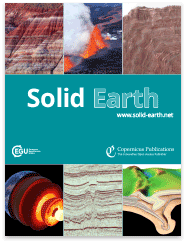
Paz-Ferreiro, J., Lu, H., Fu, S., Méndez, A., and Gascó, G.: Use of phytoremediation and biochar to remediate heavy metal polluted soils: a review, Solid Earth, 5, 65-75, doi:10.5194/se-5-65-2014, 2014.
Soil heavy metal pollution
Due to increased extraction and use by various industries, heavy metals come easily to the environment in various ways. Unlike organic substances, heavy metals can not be degraded and thus accumulate in the environment. As a result, the risk of heavy metals Due to increased extraction and use by various industries, heavy metals come easily to the environment in various ways. Unlike organic substances, heavy metals can not be degraded and thus accumulate in the environment. As a result, the risk of heavy metals entering the trophic chain has increased in recent decades, especially in specific areas of the planet.
As heavy metals enter the trophic chain, soil quality, microorganisms, plants and human health may be affected more and more. Nonessential heavy metals or essential heavy metals (but in high concentrations) are not easily metabolized. Therefore, their concentration in organisms can be very high, as we move higher in the food chain.
Objectives of the paper
One of the main points of contact between heavy metals and the trophic chain is soil. In some cases, the concentration of heavy metals in the soil is high due to volcanic activity or their background concentration in rocks. But large quantities of heavy metals enter the ecosystems from anthropogenic sources such as metallurgy, mining, pesticides, fertilizers and others. However, heavy metal remediation can be extremely expensive and complicated. In this paper, the authors review the state of art of two of the most important techniques currently: phytoremediation (with special attention to the techniques of phytoextraction) and amendments with biochar.

An overview of the potential positive effects attained by combining phytoremediation and biochar in heavy metal pollution remediation. Credit: Paz-Ferreiro et al. (2014).
Insights
Although the goal of both techniques is similar (remediation), both work differently. On one hand, biochar helps to reduce bioavailability of heavy metals in soil. On the other, phytoremediation can remove large quantities of heavy metals from soil. Both techniques have advantages and disadvantages, strong and weak points. So, an important contribution by the authors is to discuss the potential benefits of the combined use of both techniques and the possible mechanisms involved in the interaction between phytoremediators and biochar.
Solid Earth
Solid Earth (SE) is an international scientific journal dedicated to the publication and discussion of multidisciplinary research on the composition, structure and dynamics of the Earth from the surface to the deep interior at all spatial and temporal scales. More at Solid Earth homepage.
